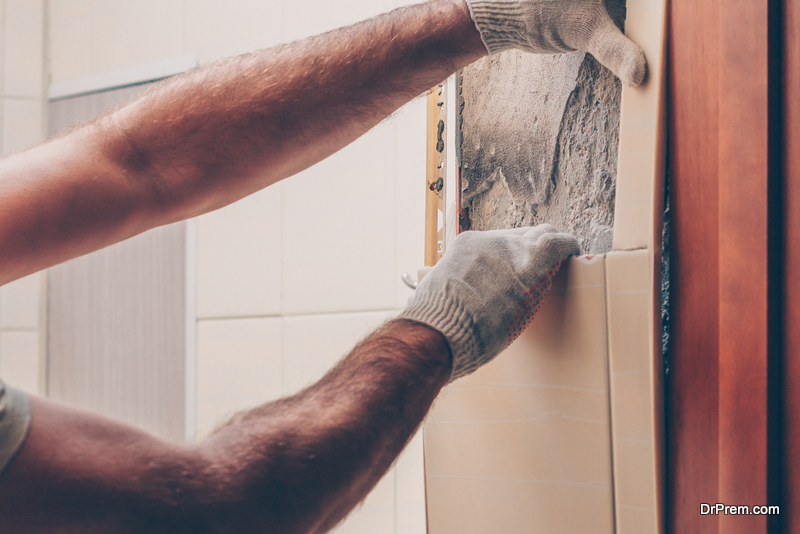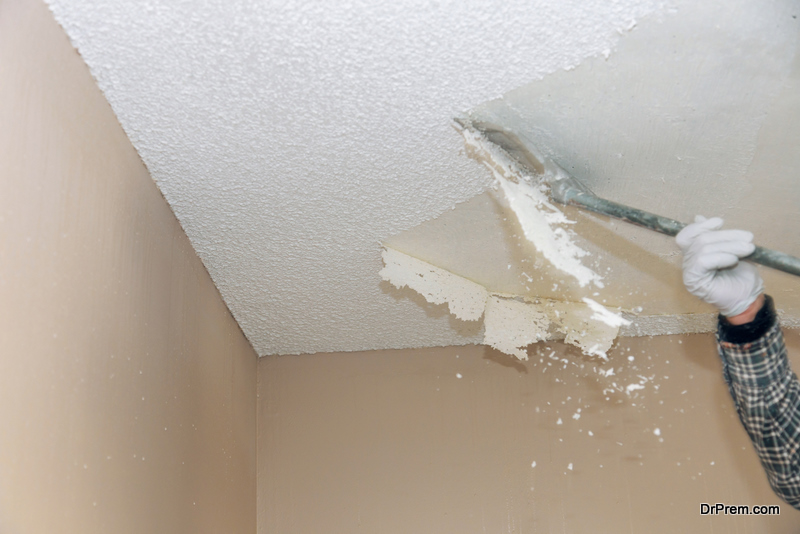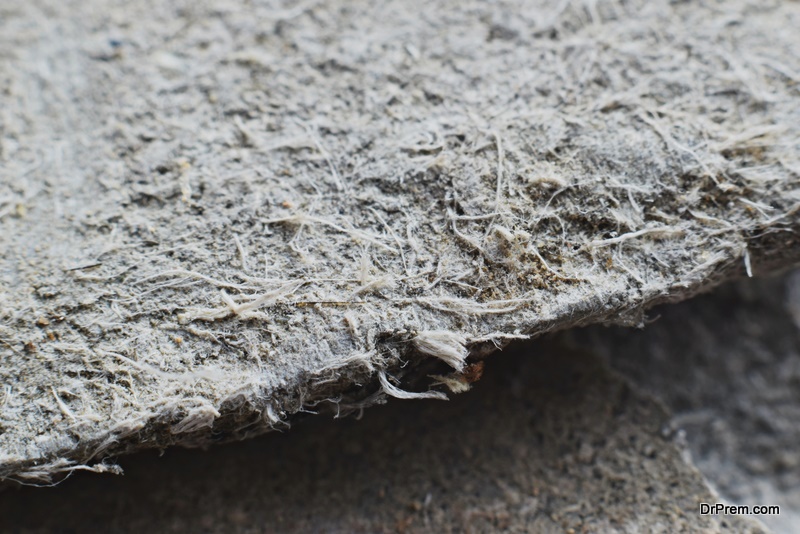Asbestos is a natural mineral that’s resistant to heat and electricity. Asbestos is also appreciated for its great insulating properties and is complementary to other building materials, which makes it a useful and valuable material.
Asbestos as A Hazard
 Although asbestos is highly resistant and useful, it’s also highly toxic. If you’re exposed to asbestos for a long time, it can have an adverse and harmful impact on your health.
Although asbestos is highly resistant and useful, it’s also highly toxic. If you’re exposed to asbestos for a long time, it can have an adverse and harmful impact on your health.
Asbestos becomes a potential hazard when it’s airborne. If the asbestos becomes damaged, fibers can be released, which are potentially dangerous. Also, as asbestos ages, it can change into asbestos dust, which may spread throughout your home.
The lungs are susceptible to scarring and inflammation from the inhalation of asbestos fibers. This exposure is also suspected to cause cancer.
Due to the usefulness of the mineral, asbestos can be found in many homes around the world. While it’s useful, it can cause severe damage to one’s lungs, especially if someone is exposed to it for a very long time.
What Steps Can I Take?
Asbestos hiding in your walls is a possibility, especially if your house was built before the 1980s. In addition to walls, some of the places that asbestos can be found are in your floor tiles and insulation vents.
Now that you know the potential dangers of asbestos, you want to know if you may have it in your home. Knowing if there’s asbestos in your home, particularly in your walls, is important to ensure you and your family’s health.
Here are steps you can take:
1. Contact Asbestos Removal Professionals
 It’s difficult to determine with the naked eye if your walls have asbestos or not. Fortunately, professionals can identify the possible presence of asbestos, then proceed with testing and analysis.
It’s difficult to determine with the naked eye if your walls have asbestos or not. Fortunately, professionals can identify the possible presence of asbestos, then proceed with testing and analysis.
It’s particularly crucial to contact professionals if your walls have been torn or experienced water damaged as this is a cause of concern for the release of asbestos fibers.
If you’re expecting to cause deliberate damage to your walls by breaking them down for remodeling, it’s also a good time to have them tested for asbestos.
2. Close Off Contaminated Areas
Once the professionals have determined the presence asbestos in your walls, you have to close off the area.
As mentioned, asbestos fibers are released when the material that contains asbestos is damaged or degraded. Hence, to avoid potential harm to your health, it’s best to restrict access to it. Also, ensure that no one can inflict further damage in the area that’ll further release the asbestos fibers. This means that you must not touch or disturb that area at all.
3. Temporarily Move Out
Depending on the number of rooms that have to be worked on and the size of your house, you might have to find temporary shelter. This is because the rooms that need asbestos removed will be sealed off.
4. Wait for Air Test Results
 After the asbestos has been removed, the air has to be tested to make sure that the air quality is acceptable for you and your family to enter the rooms. This process requires trained professionals wearing protective gear as such spaces are health hazards.
After the asbestos has been removed, the air has to be tested to make sure that the air quality is acceptable for you and your family to enter the rooms. This process requires trained professionals wearing protective gear as such spaces are health hazards.
5. Move Back In
If you had to move out, you can move back in as soon as the professionals state that the air in your home is clear of asbestos fibers. As mentioned, the clearing of air is essential for you and your family’s health.
Although you can find natural tips and DIY suggestions on how to handle asbestos in your walls, you won’t have the expertise required to execute important stages, such as the air test,without using the necessary equipment.
6. Fix the Walls
In some cases, walls have to be taken down to remove asbestos that was present. If this is your case, you can proceed to fix the walls confidently knowing that your home doesn’t harbor any toxic chemicals. Although this may mean having to allocate finances that you hadn’t planned for, it’s worthwhile since you know that you and your family’s health are not compromised.
Conclusion
Once the professionals have tested for asbestos, you have to close off the contaminated areas. Depending on the size of your home and the level of contamination, you may have to seek alternative accommodation for the time that the professionals remove the asbestos.
Once the professionals test the air in your home for toxins, you can then move back into your asbestos-free home.
Article Submitted By Community Writer




